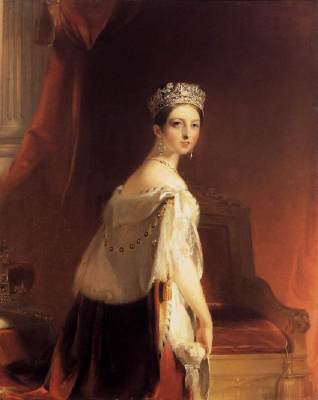In this, the centenary year of Queen Victoria’s death, today’s picture is Thomas Sully’s portrait of her as a young woman, on the threshold of her destiny, ascending the royal throne. The painting was regarded by the young queen and her advisers as the most pleasing of the many likenesses commissioned in the year of her coronation: Lord Lansdowne, President of the Queen’s Council, commented that “all the portraits hitherto painted of her Majesty have been comparatively a failure, except Mr Sully’s who had … caught an expression which was peculiar and very favourable.” Completed in the artist’s home town of Philadelphia, America, following several sittings with the queen in England, the picture was recently placed on temporary loan to the Wallace Collection in London. It has only been exhibited once in this country before, in 1888, the year of Victoria’s Golden Jubilee.
Thomas Sully left Philadelphia for London in the autumn of 1837, accompanied by his twenty-one-year-old daughter Blanch. Business was bad back home owing to an American economic recession, and Sully hoped to find some much-needed work abroad. He would also take the opportunity to familiarise himself with the styles of the leading painters in London, and to introduce his young daughter to English manners and society. On the day before his departure, an unexpected commission came his way from the local chapter of the Society of the Sons of Saint George, a benevolent association created to support indigent English emigrants and their families. The gentlemen of the society wanted a full-length portrait of Queen Victoria for their meeting room. The fee was to be $1,000. The artist would see what he could do.
Sully had the advantage of being reasonably well known. He had trained in London as a young man, in the studio of Thomas Lawrence,...

ITP 44: Queen Victoria, by Thomas Sully
18-02-2001

